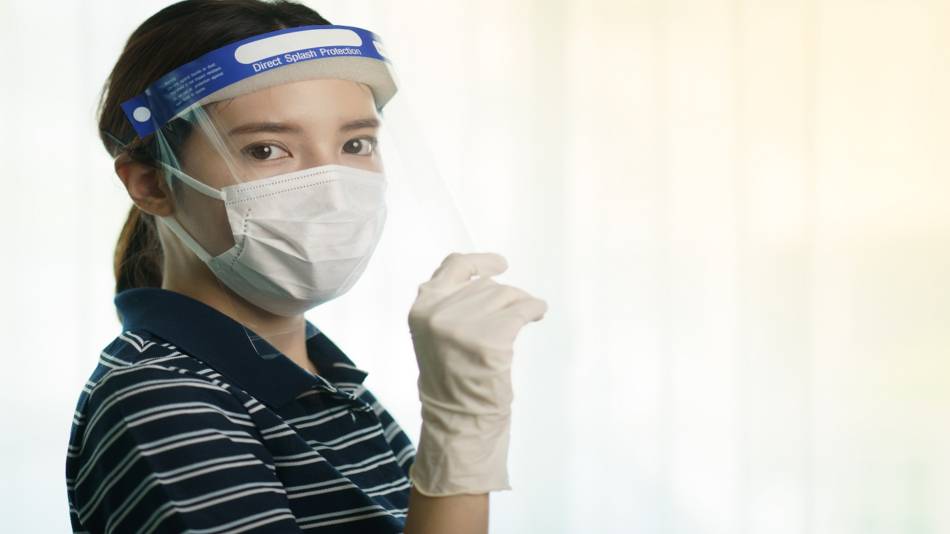
Answer:
A review of studies of coronavirus transmission found that the use of eye protection (face shields, visors or goggles) was associated with 78% less infection than with no eye protection, with the researchers noting that "Eye protection is typically underconsidered and can be effective in community settings." (Chu, Lancet 2020).
At a distance of just 18 inches from a coughing individual, face shields (worn without a mask) have been shown to reduce immediate viral exposure by 96%, according to a study using influenza virus. However, the same study showed that face shields were much less effective in reducing the inhalation of smaller aerosols that can remain suspended in the air longer than larger droplets. During the 1 to 30 minutes after a cough, during which the aerosol had dispersed throughout the room and larger particles had settled, the face shield reduced aerosol inhalation by only 23% (Lindsley, J Occup Environ Hyg 2014). Keep in mind, however, that face shields should always be worn in addition to a mask, not as a replacement for a mask.
As discussed in an article in JAMA (Perencevich, et al, April 29, 2020), the Infectious Disease Society of America has included societal use of face shields as well as face masks in its recommendations as restrictions are eased on extreme social distancing. Face shields address two key means of preventing coronavirus transmission: They provide a barrier to respiratory droplets (which, according to the CDC, can occur when a person coughs, sneezes, or talks) and help wearers avoid touching their face. In addition, they cover the eyes as well as the mouth and nose, and can be easily cleaned (with just soap and water or household disinfectants) for reuse.
Worn without a mask, face shields can also expose others to the aerosols released after coughing or sneezing. As shown in this video demonstration by researchers at Florida Atlantic University, aerosols from coughing can disperse from the gaps around the edges and bottom of face shields, potentially putting the people around you at risk. The researchers showed that, when wearing a face shield without a mask, larger droplets tend to quickly fall to the ground, but smaller, aerosol-sized droplets but stay suspended beneath the bottom opening of the shield and then rise — dispersing to the front and the sides of the mask by a distance of at least 3 feet (Verma, Phys Fluids 2020).
Even eyeglasses may provide some benefit, although the effect appears to be far smaller than that of face shields. A large, 2-week clinical study in Norway that took place when the Omicron variant was already prevalent showed that people who wore sunglasses or other types of glasses when close to others in public (e.g., on public transportation or in shopping malls) were about 10% less likely than people who did not use eyewear to report symptoms of respiratory infections, although wearing glasses did not significantly reduce the risk of COVID-19 (Fretheim, medRxiv 2022 — preprint).
When to Use a Face Shield
Note that face shields are only necessary when in close proximity to an infectious person. As determined in a study using influenza virus (noted above), at six feet away they reduced inhaled virus by 92%, which was no better than with distancing alone – demonstrating the importance of social distancing.
As noted by the CDC, "some people may choose to use a face shield when sustained close contact with other people is expected."
Wearing a face shield on an airplane, in addition to a mask but not instead of one, may provide additional protection as you may be in close proximity to others who are infectious. We are aware of only one airline, Qatar Airlines, that requires passengers to wear both a face mask and face shield, and even provides face shields for all passengers. American Airlines, Jet Blue, United Airlines, and Virgin Atlantic require face masks or face coverings but do not mention face shields as a requirement, nor do they indicate that you cannot wear one. Delta Airlines states on its website that "Plastic face shields may be used in addition to a mask but are not approved mask replacements."
What to Look For in a Face Shield
For optimal protection, a face shield should extend below the chin, reach to the ears, and have no exposed gap between the forehead and the shield (a gap typically filled by a foam cushion). Several brands of face shields are sold online and most are relatively inexpensive – costing roughly $3 to $7 per unit when two or more are ordered.
How to Make a Face Shield
If you would like to try making a face shield at home, a video tutorial using easily accessed materials has been published on YouTube by MINT Nursing, a channel for medical workers. This do-it-yourself shield extends below the chin and to the ears, and uses a foam cushion to prevent a gap between the forehead and shield.
Face Shield Product Reviews
ConsumerLab ordered face shields from four different companies, three of which were sold on Amazon and one was sold directly from the supplier in the U.S. Sign in for our ratings and reviews of face shields from Homasen, Hrgccase, Ringkle, and SafeProtec, and our opinion on one from Zverse.
If you already use a face shield, feel free to share you experience, mentioning the brand you use, in the Comments section further below.
Join today to unlock all member benefits including full access to all CL Answers and over 1,400 reviews.
Join NowAlready a member? Sign In Here.
Join now at www.consumerlab.com/join/


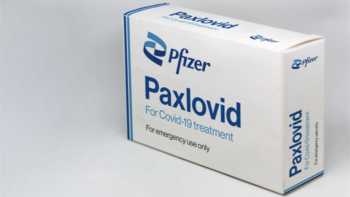
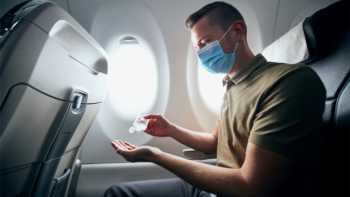
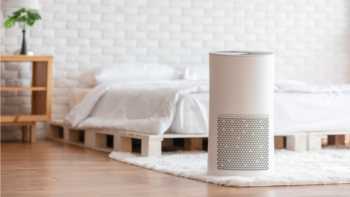
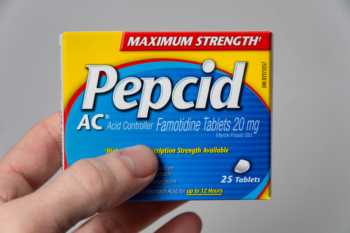
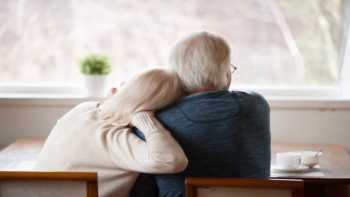
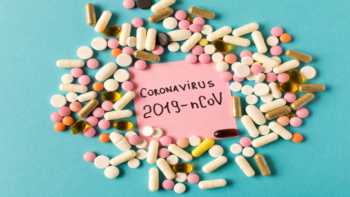





Submit your comment
This feature is restricted to active members.
Join now to add comments and get all member benefits, including over 1,400 reviews.
Join NowAlready a member? Sign in here.